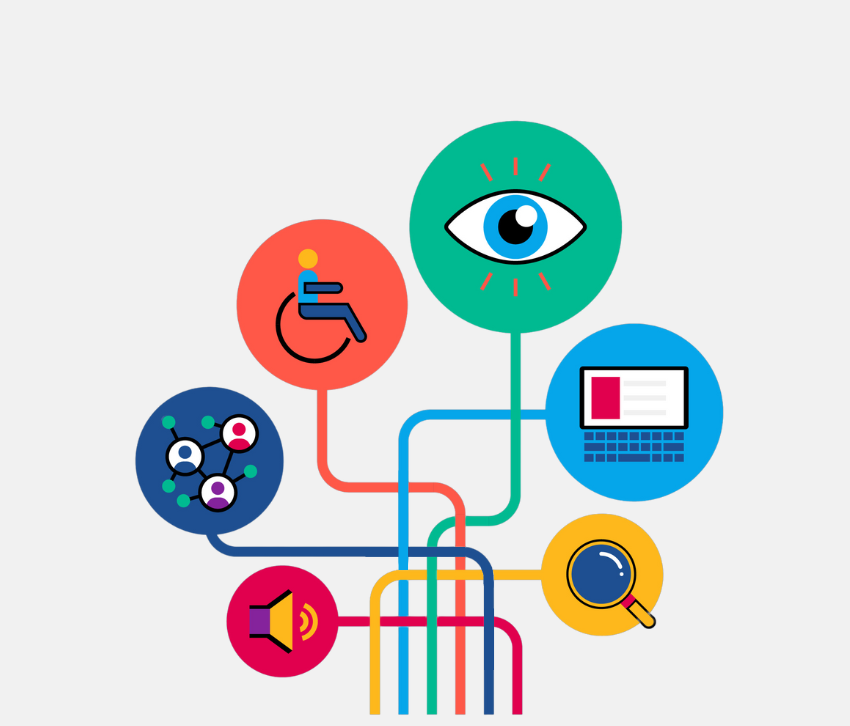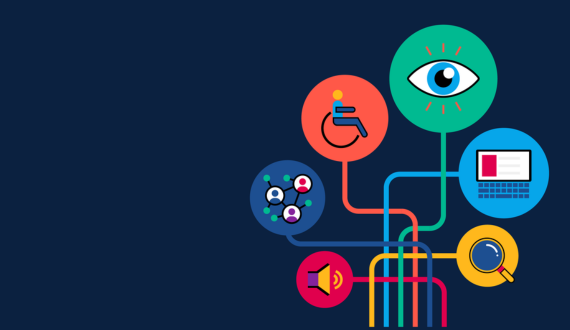Accessibility predictions from the Perkins Access team
Share

As we reflect on the past year, there is a lot to celebrate. In 2023, accessibility made headlines — from Apple’s accessibility focused short film winning an Emmy — to the Web Content Accessibility Guidelines getting an official upgrade. (Watch our webinar to get up to speed on WCAG 2.2.)
In an era of Artificial Intelligence, connected devices, smart homes, and the digitization of products and services, our team is working toward a fully accessible future — a future where no human is marginalized because of poor product design, UX, or customer experience.
On our way towards a fully accessible future, we have a few predictions about the next year:
- Gayemarie – in 2023, “authentic” was the word of the year — authenticity also happens to be what many brands aspire towards. The digitization of everything has created an environment of transparency and speed. Real time, near time, and in time is the mode with which consumers now operate. There is literally nowhere to hide. When brands are inauthentic with inclusion and accessibility, there is literally nowhere to hide — consumers and employees recognize inauthenticity instantly. The voice of the customer can amplify or damage a brand and those voices include humans for which accessibility is assumed, expected, and required. Accessibility is no longer an option and I predict there will be a greater call from the public for organizations to meet the needs of everyone, regardless of ability or age.
- Gary – 2024 will be the year that AccessibilityOps gains a foothold for digital companies that remain market leaders. AI, specifically machine learning, voice generated algorithms, pattern recognition, and generative AI (chatgpt5) are disrupting manual testing, audits, and assessments. We are seeing accessibility testing tools become more robust with AI-powered capabilities. Organizations will shift resources from tactical initiatives to strategic ones. Accessibility subject matter experts will become critical to design, training, remediation, and process improvements and will have a much bigger impact on business imperatives like customer experience, brand reputation, and commerce. Accessibility will be a critical business metric that makes a difference between brands that thrive versus brands that struggle to engage their customers.
- Danielle – disability and diversity representation in marketing campaigns will increase as organizations continue to see the value in promoting inclusion as a part of their brand. Accessibility features will be highlighted across marketing channels to demonstrate how more inclusive customer experiences are being created.
- Jason – brands that have incorporated inclusive design and accessibility throughout their process will find an additional return on those foundational efforts when moving into augmented reality, virtual reality, and spatial computing.
- Jon – digital accessibility will become a baseline requirement for not just websites and apps, but products, too. Going beyond compliance in areas like connected devices, smart watches, and digital appliances will enhance the experience for all customers while also promoting inclusivity in the rapidly evolving digital landscape.
If you liked these predictions and want to stay up to date on the latest news and trends, make sure you subscribe to our newsletter.




